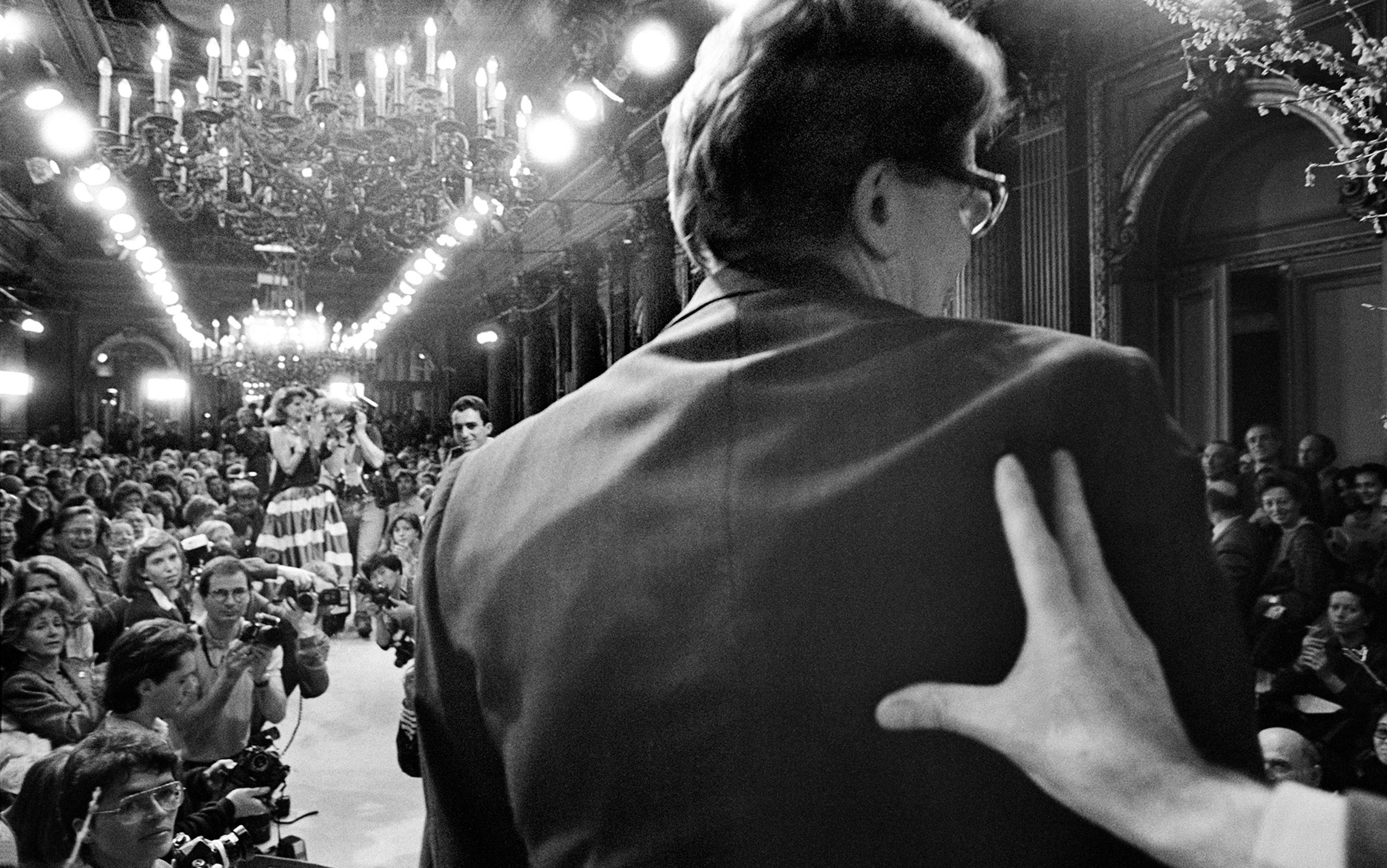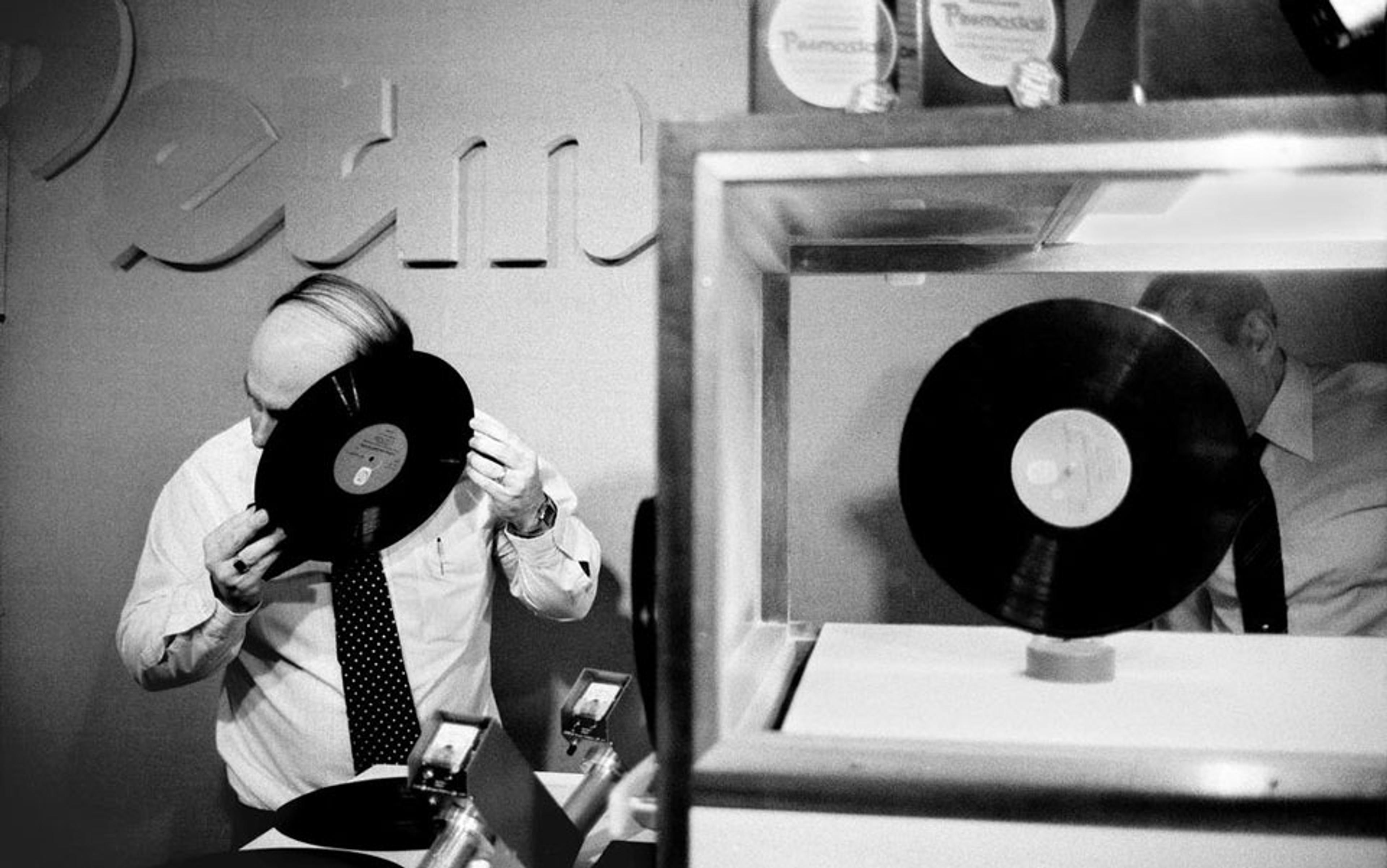The American philosopher David Lewis is remembered for defending modal realism: the view that non-actual possible worlds are as real as the actual world. But among those who knew him, he was as well known for his silences. ‘If someone asks David a question during a talk and he doesn’t know the answer right away,’ D H Mellor (my master’s supervisor and a close friend of Lewis) once told me, ‘he will sit in silence for as long as he needs while he thinks about it.’
Another philosopher with whom Lewis enjoyed a close friendship, Barry Taylor, also had a story about Lewis’s ability to tolerate the sort of silences that leave most people writhing. Speaking at the Melbourne Writers Festival in 2006, Taylor described his first encounter with Lewis – who ‘had absolutely no small-talk’ and ‘the unnerving habit of thinking before he spoke’ – in Oxford in the early 1970s:
‘Barry Taylor,’ I said. ‘Melbourne.’
‘David Lewis,’ he replied. ‘Princeton.’
Silence then fell, as it so often did in conversations with David. Desperately thinking of something to say, I said: ‘What’s [Lewis’s colleague] Richard Montague up to nowadays?’
David paused to think about what I’d said, and then said: ‘I heard last week that he had been murdered.’
‘Great Scott!’ I said, or words to that effect. ‘Great Scott! Who would want to murder a philosopher?’
David paused to think about it, and replied: ‘He had a private as well as a philosophical life.’
And that was the end of the topic.
Throughout Taylor’s anecdote, members of the audience could be heard giggling. They were, presumably, imagining the awkwardness of trying to converse with someone who made such an ‘unnerving’ use of silence, and whose remarks in between the silences did little to dispel the tension. (Sadly, Lewis’s remark about Montague was not a joke – his murder in 1971 remains unsolved.) Confronted with a prolonged silence during conversation, most of us find ourselves – like Taylor – ‘desperately thinking of something to say’. Silence makes us desperate. But why?
Let’s start by observing that, mercifully, not all silences are awkward. Most of the time, even silence in the company of others is not awkward. I’m currently sitting in a busy coffee shop. Animated conversations are happening all around me and yet, here I am, typing silently and comfortably. I don’t have a Lewisian super-immunity to awkward silence; rather, my current silence is just not the sort that anyone would find awkward. Only silences that meet certain criteria are likely to be awkward.
Awkward silences are conversational silences: they arise during conversation, and they are potentially awkward if they happen when someone should be speaking. I don’t feel awkward about my current silence because I’m not engaged in conversation. If I were, my silence probably would feel awkward. To understand why, we can look to the idea that awkward silences happen when someone should be speaking. This ‘should’ relates to conversational norms. When we converse, we’re (usually subconsciously) following norms around things like how long our pauses are allowed to be, whose turn it is to speak, and what topics are appropriate. These norms vary by culture. The London-based Japanese linguist Haru Yamada, who has extensively explored communication differences between speakers of Japanese and of English, observes that silences that are comfortable for Japanese speakers feel ‘unbearably long’ to American speakers.
An important function of conversational (and other) norms is to make our interactions with each other predictable. Especially if we don’t know someone well, it can be unsettling when they violate norms, whether that involves their interrupting us, standing too close, remaining silent for too long, or something else. We end up wondering, to paraphrase Joel Feinberg in Offense to Others (1985), what on earth they might do next, and we feel alarmed or even threatened as a result.
Lewis valued sharing information; he did not value chatter
But not everyone who flouts conversational norms is threatening. Some people have benign reasons for disregarding norms. For example, many autistic people are frustrated by directionless chat and prefer to use language to exchange information. The British naturalist and television presenter Chris Packham, who has spoken publicly about being diagnosed with autism in his 40s, illustrated this during an interview. Asked whether he socialises, Packham recounted his confusion when his girlfriend suggested visiting friends because ‘it would be nice to see them’. ‘But what for?’ Packham responded. ‘Why would I give up my time just for the purpose of seeing them unless they’ve got something interesting to tell me or we’ve something to do. What’s the point?’
None of us knows what, if any, diagnosis might have explained Lewis’s communication style, but his priorities clearly differed from those of most people. Lewis valued sharing information; he did not value chatter. It can be jarring to interact with someone like this but, if they are respectful and considerate, we eventually relax. Taylor presumably grew more comfortable with Lewis’s silences over the years. And Packham’s interviewer saw the warmth behind his take on socialising, remarking: ‘His words sound callous, mercenary even, but his tone is tender.’
Silences, then, can be awkward when they violate norms. But, interestingly, the discomfort of a long silence differs from the discomfort produced by other norm violations. A striking aspect of the discomfort arising from prolonged silence is the pressure to speak. Lewis’s silence left Taylor ‘desperately thinking of something to say’. One of Yamada’s research subjects remarked that, faced with a long silence, they’d ‘fill up the silence with talk’. This pressure to speak can be so compelling that various groups have used it to their advantage. Chinese negotiators are trained to draw out silences in order to provoke their writhing Western counterparts into making concessions. And the UK’s College of Policing recommends that, during interrogations, police officers ‘Stay silent during pauses … to encourage the witness to continue.’
What sort of ‘pressure’ is involved here? Perhaps, in part, it is normative: if a silence goes on too long, we feel that we ought to speak in order to restore order. This might be because conversations are shared endeavours. A conversation is something we’re creating with whoever we’re talking to, and this is undermined if one or other of us is silent for too long. In a 2011 study on conversational silences, the psychologists Namkje Koudenburg, Tom Postmes and Ernestine H Gordijn compared conversations to dancing: the ‘harmonious exchange of information through smooth turn-taking’ in a fluent conversation is satisfying in a way similar to coordinating one’s movements with those of a dancing partner. Dancing, like conversation, becomes awkward when it’s malcoordinated. Koudenburg and her colleagues found that people experience rejection when silence disrupts the flow of conversation. They explain: ‘people are, due to the evolutionary importance of group membership, highly sensitive to perceiving exclusion’. In other words, silences are uncomfortable when they make us worry that we don’t belong.
This explanation makes sense. When a silence goes on too long, we sense that we are failing to connect with the other person. Silence makes salient that we are struggling with an interaction that should, if all parties have enough in common, flow effortlessly. (It’s interesting to note that silences are less likely to be awkward when we don’t have this expectation that the interaction should flow effortlessly, such as when we’re trying to converse across a patchy phone connection.) When things don’t flow, we worry that perhaps this person we’re trying to interact with just isn’t one of our people. And especially if we’re invested in their being a fellow group member – as Taylor was invested in being fellow academic philosophers with Lewis – struggling to interact smoothly leaves us worrying that we’re not going to be accepted.
However, this explanation, according to which we feel a normative pressure to speak to end a long silence, takes us only so far. Interestingly, we don’t tend to feel a similar pressure with other norm violations. People who constantly interrupt us or monopolise conversation by droning on and on about themselves also violate conversational norms and disrupt the satisfying flow of conversation, but they don’t lead us to feel that we ought to clap a hand over their mouth or insist that they stop talking about themselves (although we may fantasise about doing so). Why are silences different?
One reason is that silences are… well, silent. There’s nothing else going on to distract us from the fact that someone ought to be speaking, which makes the silence very noticeable. Silence, as the saying goes, speaks volumes. By contrast, with conversational norm breaches that don’t involve silence, there’s something else to focus on: ie, what’s being said. In addition, it’s much easier to end an awkward silence than it is to do something about other norm breaches. We can end an awkward silence simply by contributing to the conversation. But attempting to stop someone’s interruptions or inappropriate questions – by saying, for example, ‘Please stop interrupting me’ or ‘That’s none of your business’ – risks souring our interaction with them. In many (or even most) cases, we would rather quietly endure the norm-violating behaviour than create awkwardness by challenging it.
Another dimension of awkward silences relates to communication. Silences can be communicative, and we sometimes remain silent in order to communicate. In my Aeon essay ‘The Joy of Sulk’ (2023), I argued that sulking is an example of this: sulkers stop speaking, in part, to communicate that they’re upset. The philosopher Anna Klieber has argued that silence ‘can communicate assent, dissent, disapproval, approval, and many more things’. Klieber describes how, in 2020, when he was asked for his views on the US president Donald Trump’s call for military action against Black Lives Matter protesters, the Canadian prime minister Justin Trudeau responded with 21 seconds of silence. Klieber notes that ‘a lot of the media attention following this encounter focused on the silence’, with journalists speculating on what it might have meant.
Trudeau is not alone in making political use of the communicative silence. In 2016, under the title ‘When Barack Obama Speaks After Mass Shootings, the Moments of Silence Say the Most’, Aeon presented the video ‘Loss’ by the US visual artist Dawn Kim: a 1-minute, 3-second compilation of ‘the aching, reflective silences in Obama’s public remarks following acts of violence that have become horrifyingly routine’.
Silence can be an effective communication strategy, but often it’s not obvious what (if anything) a particular silence is supposed to communicate, and that can make us uncomfortable. Something that emerges from Taylor’s and Mellor’s accounts of Lewis’s infamous silences is that they were typically not communicative. They arose simply because he wasn’t yet ready to speak. But it’s understandable that Taylor found them ‘unnerving’, especially before he knew Lewis well. Sometimes, we find it easy to interpret a person’s silence – but, for that to happen, we need context. This might include things like familiarity with the silent person and how they typically communicate and what they’re likely to make of the situation they’re in. If you’ve ever exchanged a glance with someone and felt confident that you both know exactly what the other is thinking, it’s your knowledge of context that makes your silent connection so effortless. But when we don’t have that context, we struggle to interpret silences. Those journalists who were speculating about Trudeau’s silence would likely have found it easier to interpret had they been party to Trudeau’s uninhibited reaction to Trump’s comments while alone or with trusted others. Similarly, it probably took a while before Taylor realised that Lewis’s silences were due to him ‘thinking before he spoke’. During their first encounter, Taylor might have been wondering things like ‘Does he not want to talk to me?’ during Lewis’s lengthy silences. It’s this lack of context – specifically, Taylor’s lack of familiarity with Lewis’s style of communication – that made the silence so uncomfortable.
The above examples involve feelings of awkwardness resulting from silences created when other people don’t speak when we expect them to. But, of course, some awkward silences result from our own failure to speak. This can happen if we’re struggling to make small talk with someone, if we’re shy or star-struck or experiencing intense emotion, or if we’re caught off-guard. In cases like these, we often worry about how others might interpret our silence. Specifically, we worry about one or both of two things: having others misinterpret our silence, and having others correctly interpret our silence. Let’s consider these in turn.
It’s easy to understand why we might worry about people misinterpreting our silence. Perhaps that person with whom you’re struggling to make small talk might think you’re boring, when really you’re simply shy. Perhaps your employer, who has just accused you of embezzlement, might misconstrue your silence as an admission of guilt, when you’re just stunned. Worrying about being misinterpreted can be uncomfortable. We want to present ourselves to others in a favourable light, and being misinterpreted makes that difficult.
This idea of presenting ourselves in a favourable light is important. The sociologist Erving Goffman argued that, when we’re interacting with others, it’s as if we’re performing a role in a play. So, when we’re at work, we’re – consciously or otherwise – taking care to act the role of The Employee; perhaps even The Smart Employee, The Honest Employee, or whatever. Likewise, when we’re on a date, we’re taking care to act the role of The Attractive Partner or The Conversationalist. Our social standing is threatened when we fail to act in accordance with our role, which makes being misinterpreted stressful. If we are playing The Honest Employee at work and our employer accuses us of embezzlement, it matters to us that those around us do not misinterpret our stunned silence as an admission of guilt, since their doing so would undermine our role.
You don’t want your date to see this part of you: your nervousness is part of your backstage persona
What about our worry about having others correctly interpret our silence? This idea might strike you as odd. Goffman’s model of role-playing helps us understand what’s going on here. Just as Goffman believed that we have a ‘frontstage’ persona when we’re interacting with others, we also have a ‘backstage’ persona. This is when we drop the role and relax, like an actor walking off stage and discarding their costume. We’re backstage when we’re relaxing at home in our pyjamas, free from worries about who might see us and what they might think. It can be stressful to have our backstage persona exposed, as when we sneak outside to put the bins out and find that our date from last night happens to be passing and has caught sight of our pyjamas and unwashed hair. Our backstage selves are not necessarily anything to be ashamed of, but neither are they intended for public view.
Silences can be awkward when they come with the threat of having our backstage persona exposed. Suppose you’re on a date. You want your date to find your company interesting and enjoyable, but you’re nervous, and you struggle to find things to say. Silence results, which leads your date to view you – accurately – as nervous. This is uncomfortable, because you don’t want your date to see this part of you. Your nervousness is part of your backstage persona.
Having squirmed our way through demystifying awkward silences, what about comfortable silences? These are silences that result when people who know each other well enough to converse are in each other’s company, with nothing to prevent them from speaking to each other if they wish to do so (ie, they are not in a noisy environment or in the cinema or in some other situation that makes conversation difficult or inappropriate), but they are silent without feeling uncomfortable about the silence. Comfortable silences often arise between people who know each other well, but some situations are engineered to help make comfortable silences possible. For example, a psychotherapist might remain silent during their client’s pauses to allow them to reflect. And Quakers traditionally engage in silent worship, in which they gather together with the understanding that anyone who wishes to speak up is welcome to do so, but otherwise everyone remains silent.
The insights we made about awkward silences also help us understand what makes some silences comfortable. We saw that silences have the potential to be awkward when, according to conversational norms, someone ought to be speaking. With some silences, this aspect of norm-violation is absent. The norms governing psychotherapy sessions and silent worship permit unusually long periods of silence. Prolonged silences between friends might also be permitted by the relevant norms. Friendships develop their own norms – usually informally, without explicit discussion – around things like the frequency of get-togethers, which conversational topics are appropriate, and what sort of favours can be asked. As these norms emerge, some of the more general-purpose norms around social interactions become less relevant. For example, friends might, without violating the norms governing their friendship, broach topics that would be inappropriate among less intimately connected people. Likewise, the usual expectations around filling silences might become less relevant, allowing friends to experience silences together without feeling a pressure to speak.
We saw that silences can be awkward when they disrupt the satisfying flow of conversation, in a way comparable to dance partners fumbling their steps. But silences are not always disruptive. This might be because – to stick with Koudenburg and colleagues’ analogy – the dance itself is a relaxed affair that allows for periods of stillness. Interaction between friends is sometimes like a therapy session, in which one friend silently allows another to gather their thoughts between periods of speaking. And often, when friends are together, there’s no clear answer to the question ‘Is a conversation currently in progress?’ Time shared by friends can resemble Quakers’ silent worship: someone may speak when they have something to share, but there is no expectation to do so. In cases like this, silence is not disruptive because there is nothing for them to disrupt.
We don’t expect our friends to misinterpret us in any significant way; they know us too well for that
Next, sometimes we’re uncomfortable because we’re struggling to decipher what, if anything, a person’s silence means. Without this struggle, silence need not be awkward. Struggling to decipher a silence isn’t likely to happen in a therapy session or silent worship, where everyone involved – assuming that they understand the situation – knows what the silence is for. We do sometimes struggle to decipher what a friend’s silence might mean, but usually this is less fraught than when interacting with people we don’t know well. When a friend is silent, our familiarity with them provides context that helps us interpret their silence. We think things like ‘She’s angry because he’s late, again’ or ‘He’s struggling not to laugh.’ We are also unlikely to entertain the possibility that a silent friend is hostile towards us. So, while Taylor might initially have worried that Lewis’s silences meant that he was annoyed, this worry would have faded as Taylor grew more confident that Lewis enjoyed his company.
Finally, we saw that when a silence is created by our own failure to speak, we worry about others misinterpreting that silence or glimpsing our backstage self, and this can be awkward. When these worries don’t arise, silence is more comfortable. We don’t expect our friends to misinterpret us in any significant way; they know us too well for that. And we’re less likely to worry about exposing our backstage self when we’re with people we know well. With them, the contrast between our frontstage self and our backstage self is less dramatic than it is in less intimate relationships. While you’d be horrified to be caught in your pyjamas by last night’s date, you probably don’t mind your best friend seeing this side of you.
Something that emerges from all this is that it’s not silence itself that is awkward (or not). The capacity of silences to be awkward or comfortable is set against our efforts to connect with and understand other people, to be seen by others in the way we wish to be seen, and to be accepted. Running through all the aspects of awkward silence we’ve explored here is a common thread of anxiety about how well we’re engaging in connection and understanding with the people we interact with. In a comfortable silence, like the ones you enjoy with those you know and love, that anxiety isn’t there. With them, you don’t struggle to connect and understand. You’re already there.






